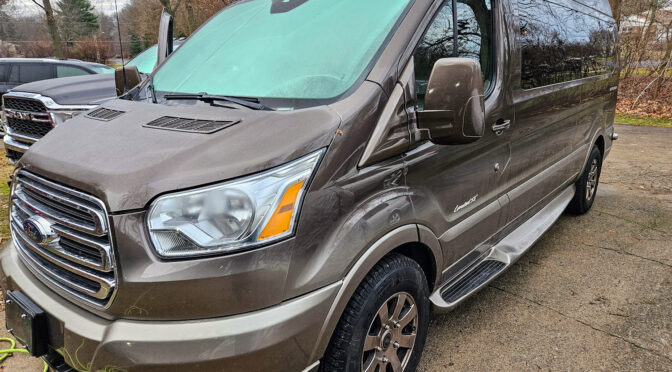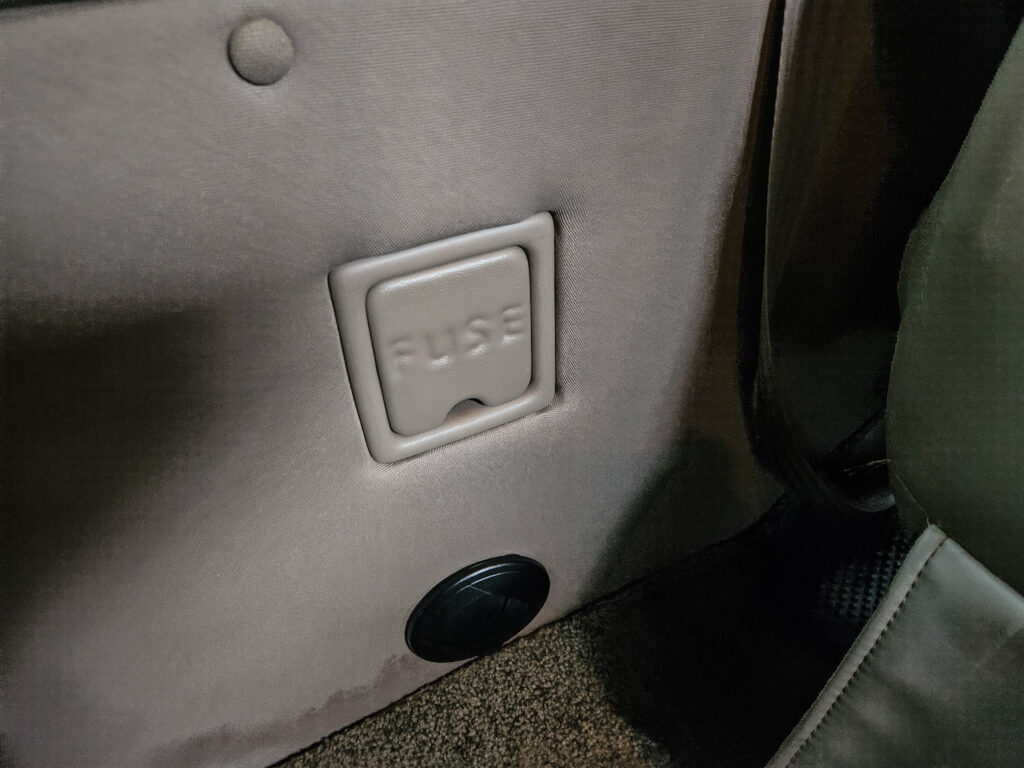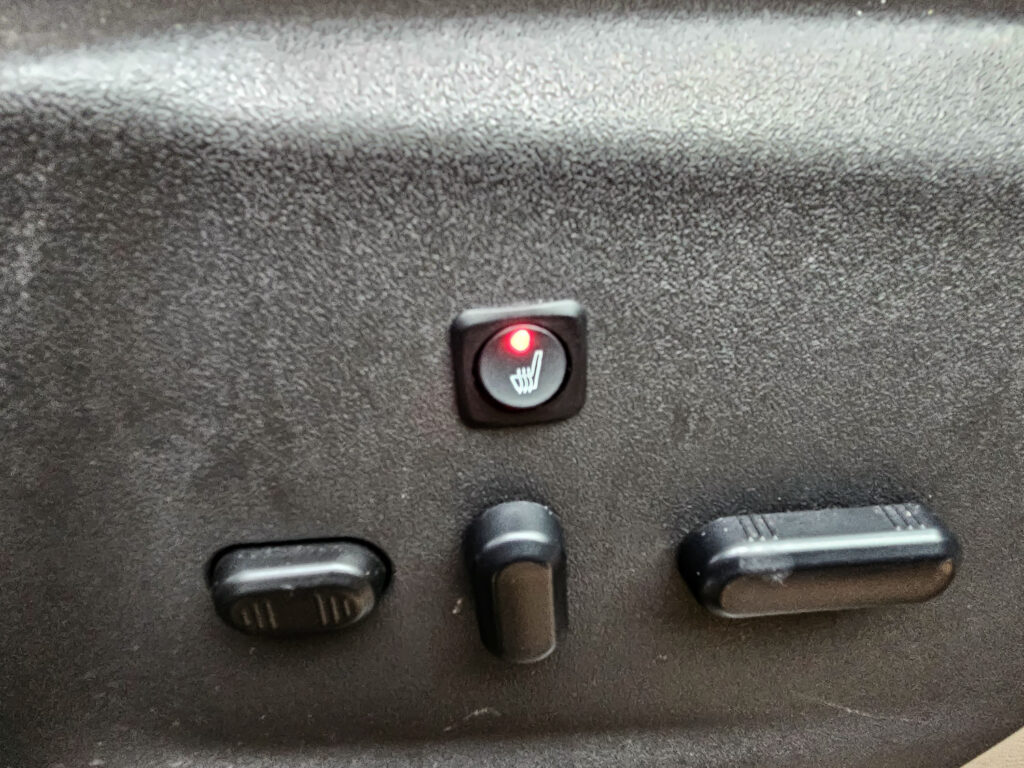We got a good deal at the end of 2016 on a Ford F150 Transit that was converted by Explorer vans in Warsaw, Indiana. It’s no longer under warranty so I’m now responsible for all maintenance. With cold weather here, my wife reminded me that her passenger seat heater was no longer working.
First thing I did was to separate the Molex connector and test for power. The line was dead so that usually means a bad fuse. So…. that started a bunch of hunting on my part – where did Explorer wire the seats in at?
I checked the Ford fuse diagram for the passenger compartment fuse block located just above the accellerator pedal and there weren’t any likely candidates for the passenger side seat. That meant Explorer tucked a custom fuse block somewhere, but where?
I honestly expected it to be on the driver side wall between the first row of passenger seats and the driver seat but it wasn’t there. I started searching on the WWW for an Explorer van manual and found one for a Explorer van but with the same Transit F150 body style but I was not sure about the model year [Here’s the link to the manual I found but I didn’t see a date anywhere in it].
The fuse block was on the driver side wall but behind the first row of passenger seats. The plastic cover was the same color as the fabric and I just never noticed it before.
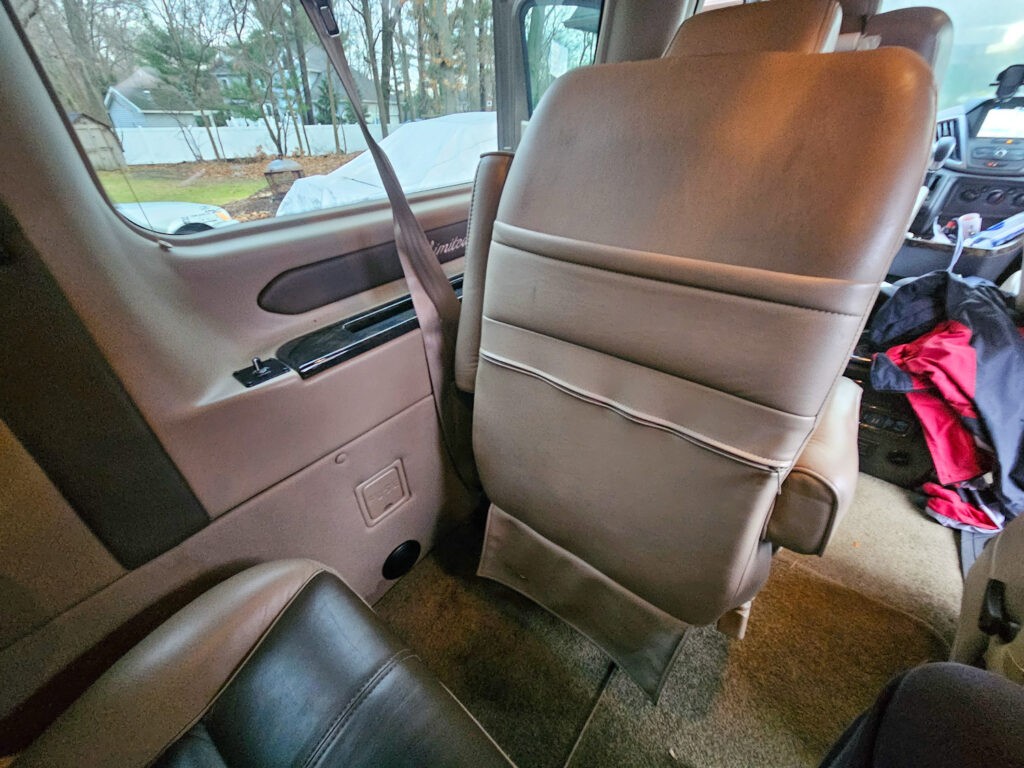
The next is a screen shot from the manual I found and the passenger heated seat fuse location matched at least:
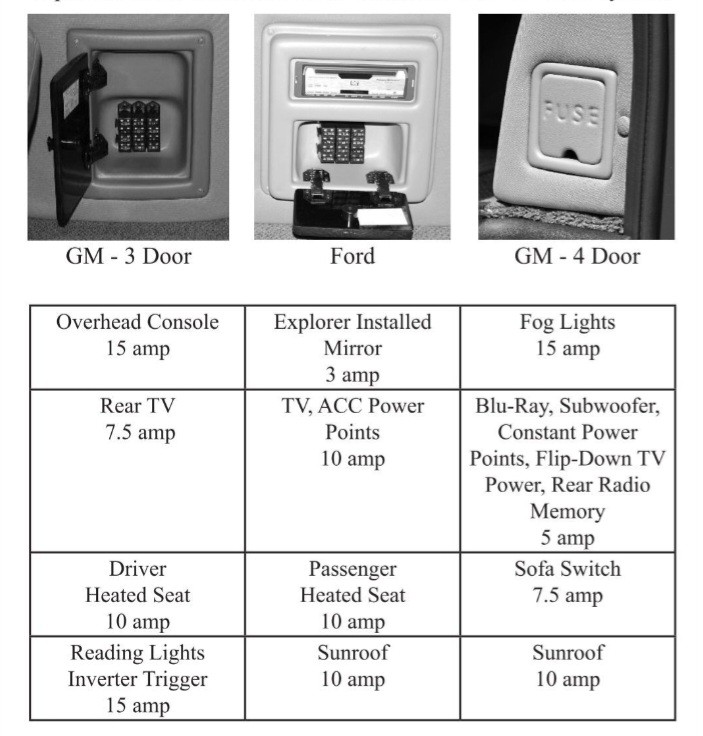
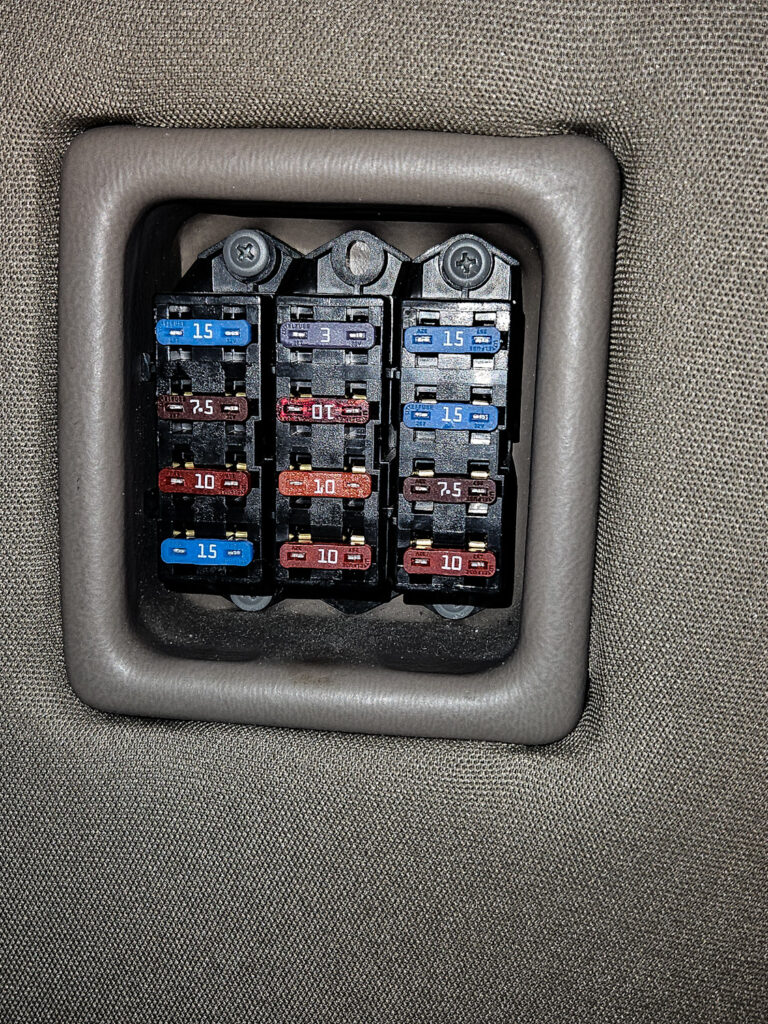
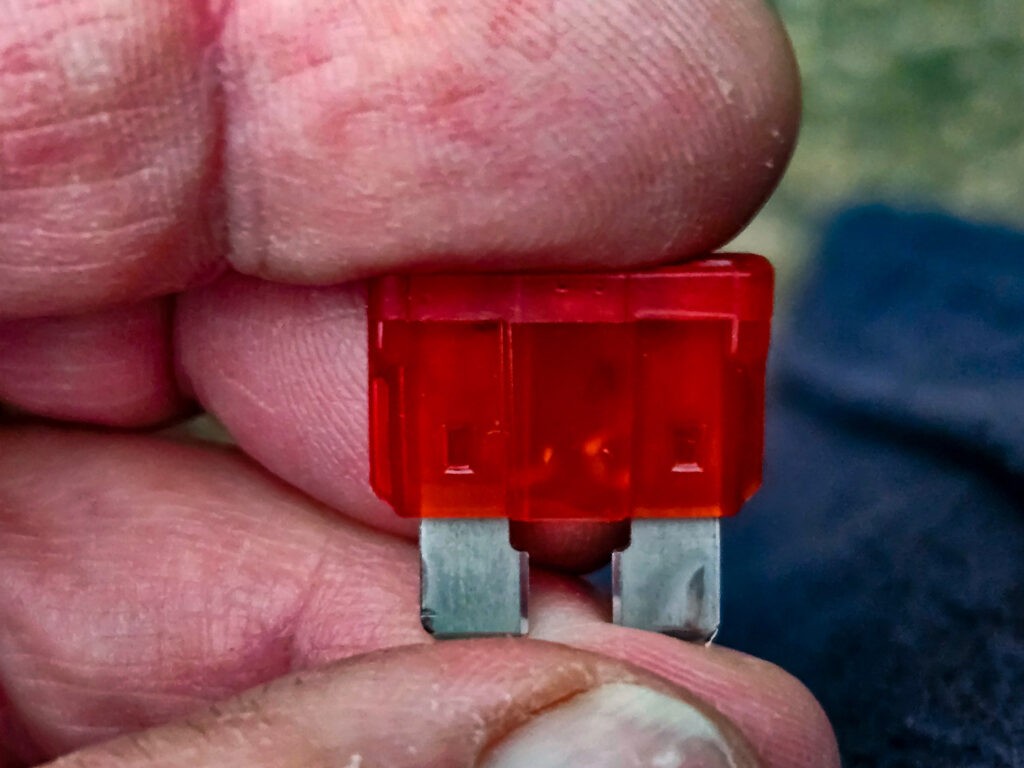
We made a 10-11 hour drive to New Jersey and her seat worked the whole time. So, the current issue was fixed but it didn’t answer the question as to why it blew in the first place.
I have a hunch though – somebody spliced in smaller gauge wires from the main harness to the rocker on/off switch on the seat. Right after we bought the van, that seat warmer didn’t work and my best guess is that the local Ford dealer’s mechanic did a questionable splice using solderless butt connectors and the thinner wire. That means there would be a higher impedence that may be what is popping the fuse – we think this is the second time.
I have two options – an easy one and a longer-term “when I have time fix”. I ordered an ATO 10 amp fuse that has an automatic resetting breaker built into it. These act like little circuit breakers – they trip when they get too hot and then reset when they cool down. So, you have protection without a blown fuse. [Click here to see them on Amazon] I will have to see if there is enough vertical clearance because a normal ATO fuse sticks out about 0.48″ and the breaker is 1.16″ and may be too tall. In the mean time I have a spare 10 amp fuse in the glove box just in case.
The correct solution (when I have time if ever) would be to redo the hack-job splice with the correct gauge of wire and I would probably solder them together vs. the old fashioned cheap crimp on butt connector the last fellow used.
I wrote this quick post in case anybody else finds themselves having a “where is the Explorer fuse block” moment. I hope this helps you out.
If you find this post useful, please share the link on Facebook, with your friends, etc. Your support is much appreciated and if you have any feedback, please email me at in**@*********ps.com. Please note that for links to other websites, we are only paid if there is an affiliate program such as Avantlink, Impact, Amazon and eBay and only if you purchase something. If you’d like to directly contribute towards our continued reporting, please visit our funding page.
